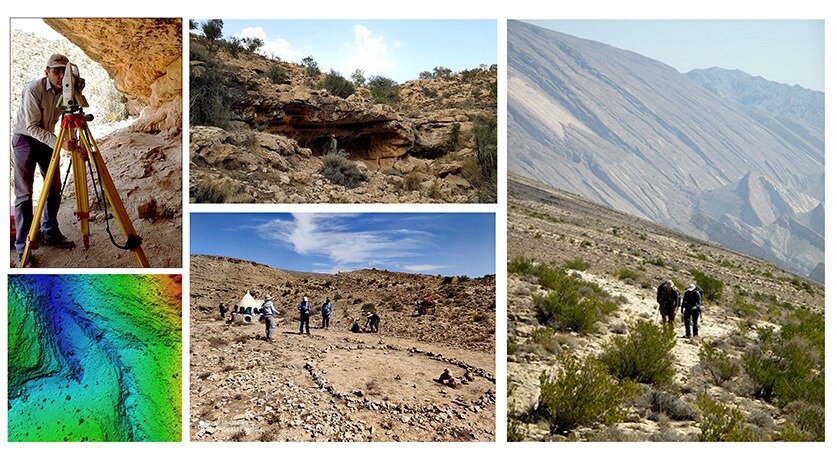Archaeologists found a plethora of stone tools and artifacts on the summit of Gav-Bast Mountain in southern Iran, north of the Persian Gulf.
During the 19th Annual Symposium on Iranian Archaeology in Tehran, Fereidoun Biglari, an archaeologist and cultural deputy of the National Museum of Iran, addressed guests on the discovery.
Due to the existence of a prehistoric rock shelter, including a hunting scene with archers, animal games, and a giant predator, Gav-Bast Mountain is of tremendous importance in Iranian rock art archaeology.
Biglari began his lecture by reviewing the history of archaeological research in the Eshkat-e Ahou Rockshelter, which started with Khaled Sadeghi’s efforts in 2001 and culminated in the General Directorate of Cultural Heritage of Hormozgan listing this prehistoric site on the National Monuments List in 2005.

New information about prehistoric settlements on these mountain highlands was obtained as a result of several short field surveys conducted between 2010 and 2021 with the support of the municipality and the Bastak Charity Association, as well as the permission of the Iranian Center for Archaeological Research and the General Directorate of Hormozgan Cultural Heritage.
He went on to say that the findings showed that Neolithic human societies utilized the natural resources of these highlands, which are between 1,100 and 1,800 meters above sea level, on a seasonal basis roughly 7,000–8,000 years ago.
The researcher also discussed the necessity of preserving Gav-prehistoric Bast’s motifs and the techniques taken to document the art and its setting, such as drone mapping, photogrammetry-based 3D models of the shelter and its panels, and other relevant efforts.
In closing, Biglari hoped that a detailed 3D model of the shelter and its paintings would be presented in the Bastak Museum shortly and that visitors to the National Museum of Iran would be able to see this remote site and its painting panel in the museum.
He also stated that this study would not have been possible without the assistance and cooperation of the Bastak Municipality and the Charity Association.
Gav-Bast Mountain is flanked by the Zagros Mountains, which span northwest-southeast from eastern Turkey and northern Iraq to the Strait of Hormuz. The Zagros range stretches over 1,600 kilometers and is more than 240 kilometers wide.
It forms the extreme western frontier of the Iranian plateau. However, its foothills to the north and west reach into neighboring nations. It is primarily located in what is now Iran.
Deposits from the excavated cave and rock-shelter sites, mainly in the Zagros Mountains of western Iran, dated to the Middle Paleolithic or Mousterian periods, provide the first well-documented evidence of human occupancy (c. 100,000 BC).
The Iranian Plateau stretches about 2,000 kilometers from the Caspian Sea to Baluchistan in the southeast. It covers much of Iran, Afghanistan, and Pakistan west of the Indus River and covers over 3,700,000 square kilometers.
Despite its name, the plateau is far from flat, with the highest peak, Damavand in the Alborz mountain range, at 5610 meters, and the Dasht-e Loot east of Kerman in Central Iran, dipping below 300 meters.























